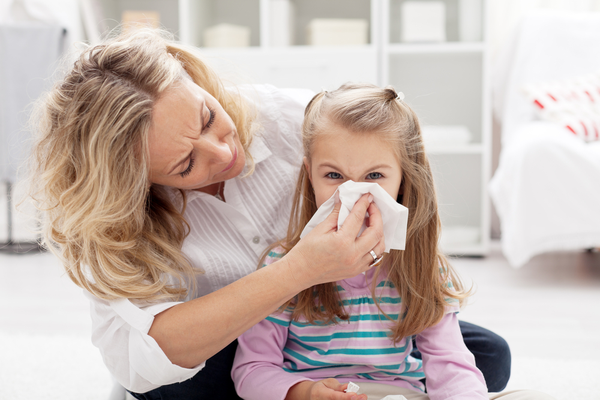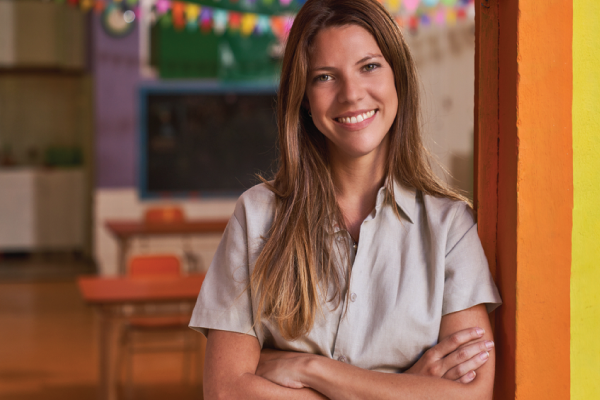It’s the middle of winter, which means we’re deep into cold and flu season. We all know how dismal it can get at home, in early learning centres and schools this time of year – all those sniffles, coughs and runny noses.
Thankfully there are some simple things we can do to help reduce the prevalence of these viruses. The first is teaching children good etiquette surrounding cold and flu.
In this article, we’ve put together a helpful guide to follow this flu season.

Why is cold and flu etiquette important?
Firstly, let’s talk about why flu etiquette is important.
Influenza virus is spread through airborne droplets caused by coughing and sneezing. This makes it highly contagious, and children are one of the most vulnerable groups. Children are more likely to catch and spread influenza, carry large amounts of the virus in their nasal secretions, and shed more frequently during the infectious period. What’s more, children tend to have more contact with each other, as well as poorer hygiene practices.
For many young children catching the flu means being exposed to the virus for the first time. If this is the case, the immune response will be slower and may have more serious effects.
Staying safe this winter
Recent flu surges across the country and a number of influenza-associated deaths in children and teenagers have sparked concern for many people.
According to the Department of Health, the risk of kids contracting flu is higher this winter due to lower vaccination rates and less exposure during the last two years of restrictions and lockdowns, meaning that it’s more important than ever to practice good etiquette and hygiene.
In addition, don’t forget to remind families and educators that they should stay home if they are showing symptoms of illness to help protect one another and reduce spread.
Use fun activities to teach kids about germs
While young children may not be able to grasp the complex science behind viral transmission, they can certainly be helped to understand the concept of germs.
Explaining how and why germs spread is a good way to get your kids thinking about cold and flu etiquette, which you can do through art and activities.
This might look like drawing pictures, playing games or using the ‘glitter trick’. Below you’ll find ten helpful tips for teaching flu etiquette to children:
10 ways to teach cold and flu etiquette to kids
1. Have fun washing hands
Hand washing is the simplest way to control the spread of common viruses. Teach kids the importance of washing their hands by making it a routine:
- Before touching or eating food
- After going to the toilet
- When they get home from school
- After leaving the playground
- When their hands are dirty
- Before and after spending time with someone who’s sick
If kids find hand washing a drag, make it fun by using soap that is colourful, smells nice or comes in kid-friendly shapes. You can also do adjacent activities like finger painting with bubbles to get kids excited about soaping their hands.
It’s important to coach kids through correct hand-washing procedure. Make it into a fun step-by step activity:
- Step 1 – wet your hands with warm or cool water
- Step 2 – turn off the water and reach for the soap
- Step 3 – lather soap over the front and back of your hands and spread it between your fingers
- Step 4 – rub your soapy hands together for 20 seconds
- Step 5 – rinse off the soap and use a clean towel to dry your hands
2. Sing a song!
A 20-second period might seem like a long time for your youngsters, so make it upbeat by timing them with a stopwatch, counting down or singing a song.
A good rule of thumb is that 20 seconds equates to singing Happy Birthday twice. You can also sing the alphabet or change it up with songs your children love.
3. The glitter trick
There’s a great trick using glitter to teach kids about germs and how they spread. Before you start, introduce them to the concept of germs and ask them to talk about and observe what they’re learning throughout the activity.
- Step 1 – Tell your child that in this activity glitter represents germs.
- Step 2 – Ask them to rub hand lotion all over their hands so that both sides are covered.
- Step 3 – Sprinkle a little glitter into the palm of the child’s hands and ask them to rub them together. What do they see? The glitter should stick to both sides.
- Step 4 – Offer the child a towel and ask them to try and rub the glitter off. It won’t budge.
- Step 5 – Now ask the child to wash their hands with soap, lathering up and rubbing their hands together for at least 20 seconds. This should be effective in removing the glitter. Explain how the same process works with ‘sticky’ unwanted germs.
Ta da! The glitter trick is an immersive experience which teaches kids the importance of washing hands.
4. Use a tissue
For kids, everything is a tissue – sleeves, toys, furniture. Make sure your kids know that tissues are the best place to blow your nose.
You can send them to school or childcare with small packs, and there are a number of brands doing eco-friendly options. Teach them to bin tissues immediately and never leave them lying around.
5. Careful coughing
Practice ‘careful coughing’ by teaching your children to catch their coughs in a tissue or their elbows – not in their hands.
This is useful because we are less likely to share our germs from our elbows when interacting with others, and of course tissues and their germs can be placed into the bin right away.
6. Reach for the hand sanitiser
Kids can sanitise too! Help make it a routine by offering sanitising stations around your service.
Encourage children to sanitise before eating and after touching things like playground equipment, tables and doorknobs.
7. Sharing is caring – but not where germs are concerned
Children love to share things with their friends, and while it’s a wonderful value to instil in them early, try to explain that sharing is not caring where germs are concerned.
Teach your kids that it’s ok to share time and toys with their friends, but sharing things like food, cutlery and drink bottles is not a good idea.
8. Look after yourself
Part of keeping children safe from flu is looking after yourself.
Practice healthy routines surrounding sleep, food, exercise and flu etiquette and you’ll be accomplishing two things simultaneously: you and your family/childcare centre will stay healthy, and children will learn from your example as a role model.
9. Cold and flu awareness
Awareness means making sure everyone is informed about the flu. There are some great resources for parents and educators to check out, such as this one from the Department of Health.
10. Talk about it
Get kids involved by talking about germs, cold and flu. Having an ongoing conversation during flu season is one of the best ways to ensure kids stay informed and active surrounding etiquette.
Instilling good hygiene practices
Part of teaching children well is setting a good example – so whether you’re a parent or working in early childhood education and care, it’s important to practice proper cold and flu etiquette yourself.
Help children stay safe this winter by checking in and revisiting useful resources like this article to keep on top of best practices for reducing the spread of illness.



